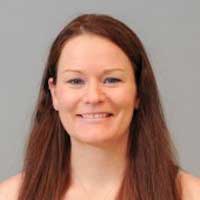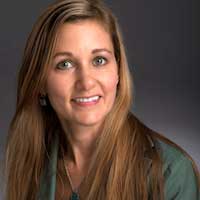
Jocelyn Blore
In 2009, the National Academy of Sciences disquieted the scientific and legal communities, reporting that the vast majority of forensics methods had not been sufficiently tested to establish scientific validity. The NAS stated, “With the exception of nuclear DNA analysis…no forensic method has been rigorously shown to have the capacity to consistently, and with a high degree of certainty, demonstrate a connection between evidence and a specific individual or source.” The most startling implication of this report was that it called into question the outcomes of thousands of criminal cases relying on these types of evidence, not to mention the futures of countless experts in the implicated forensic subfields. And over the past few years, there have been echoes of the NAS bombshell which have cast doubt over long-used methods in the discipline.
In 2015, the justice department and the FBI admitted that their elite forensics unit had given faulty testimony in court on the results of hair analyses for two decades, including in the cases of 32 defendants who had since been put to death (The Atlantic). Most recently, the President’s Council of Advisors on Science and Technology (PCAST) released a startling report in September 2016, entitled Forensic Science in Criminal Courts: Ensuring Scientific Validity of Feature-Comparison Methods. This study summarized the scientific underpinnings of commonly used forensics methods. It cast particular doubt on bite-mark analysis, which lacks feature-comparison trustworthiness (i.e., the ability to differentiate between different sources’ teeth impressions). Naturally, this conclusion is being fought viciously by credentialed forensic odontologists, who are feeling a threat to their professional futures. And not surprisingly, the entire report is being disputed by the National District Attorneys Association, a group which benefits directly from having easier standards of proof for its prosecutors.
PCAST evaluated forensics methods according to two types of validity: foundational and applied. ‘Foundational validity’ refers to whether a technique is scientifically sound, replicable, and accurate in a lab environment. ‘Applied validity’ is whether a technique’s effectiveness can be used in the real world outside of a scientific setting. The report’s stunning conclusion was that “…many forensic feature-comparison methods have historically been assumed rather than established to be foundationally valid based on appropriate empirical evidence” (emphasis added). In fact, the only forensics technique to have established both foundational and applied validity was single-sourced DNA analysis. Fingerprints or multiple-source DNA evidence, by comparison, were found to only have foundational validity, and ballistics identification only had the potential for foundational validity.
Here is a simplified chart summarizing the results of the impactful PCAST report:
| Forensic Science Method | Validity? |
|---|---|
| Bite-mark analysis | “PCAST finds that bitemark analysis does not meet the scientific standards for foundational validity, and is far from meeting such standards.” |
| Single-source DNA analysis and simple two-source mixtures | Holds foundational and applied validity |
| Multiple-source DNA analysis and complex mixtures | Shows promise, but still needs to establish definitive foundational and applied validity |
| Tire and shoe-mark | Requires further empirical testing to establish any validity |
| Fingerprints | Foundationally valid, but still needs to establish applied validity due to three problems: confirmation bias, contextual bias, and lack of examiner proficiency testing |
| Firearms | Requires further empirical testing to establish any validity, although courts should be able to determine whether evidence is deemed admissible |
While the findings seem troubling for the future of forensics, it’s important to note that just because the twin standards of validity haven’t been established doesn’t imply that they’re theoretically impossible (except perhaps in the case of bite-mark analysis); rather PCAST is emphasizing the need for further scientific testing both in and out of a laboratory setting in order to establish responsible forensics methods.
Why is this important? The obvious answer is that it would be unethical to convict a criminal based on shoddy evidence, which in addition to the aforementioned FBI hair analysis scandal, has occurred far too frequently in the US justice system. As proof of point, the Innocence Project has a database of criminal cases where improper forensic methods were used to convict defendants and later overturned by DNA analysis. Also, forensics evidence is still crucial to exonerate or convict criminals, especially in cases with no eye-witnesses or video footage. It helps legal teams to reconstruct crime scenes and tell stories encased in drops of blood and shards of glass, even when the evidence is invisible.
Forensics Colleges interviewed three prominent professors on the future of their field in the wake of the PCAST report. What follows is a discussion of what aspiring forensics students can do to ensure that they’re channeling their efforts into trusted, reliable branches of this exciting field.
Three leading professors graciously agreed to interviews and discussed their thoughts on the future of forensics in the wake of the PCAST report.

After earning her PhD in forensic genetics, Dr. Walsh joined Yale University as a postdoctoral research associate in the Department of Anthropology. She’s authored countless scholarly journal articles and book chapters in her field, and has received prestigious research grants from the National Institute of Justice, the Department of Defense, and the National Institute of Justice. In addition to teaching, she runs the Walsh DNA Phenotyping Laboratory, which collaborates with universities worldwide to uncover the complex genetic underpinnings of physical appearance.
In 10 years, what forensics methods do you think will be discontinued (if any)?
I don’t know of any methods that could potentially be discontinued, there may be several that require the ‘per expert witness opinion’ attached to the report and they may eventually be replaced by more accurate methods, but I can’t tell for sure. As our technology in terms of electronics and pattern recognition, computers, etc. gets better, these types of expert methods become better, but they are hardly a hard science.
What newer forensic science techniques do you believe hold promise for the future (if any)?
I will simply speak of biology as that is my area. I do believe phenotyping and ancestry prediction will become more popular (I hope!); we are certainly striving for this in terms of research goals by developing prediction models for pigmentation, age, and hair structure with more to come (face eventually in 10-20 years). Using biomolecules (DNA/RNA) in other ways such as familial searching (standard STRs*, but different statistical approach), biological sample type/time deposition (using circadian biomarkers), and expression/methylation analyses…The more research, the better our methodologies will become.
What advice would you give to students in forensics?
Do a dual major, or major in biology/chemistry with a special focus in forensics. Try not to just go for forensics alone as a degree. Having a solid and strong background in the core topics in biology and chemistry will make you a better forensic scientist. That being said, you still need training in forensic interpretation and methodologies. Best advice is to do a core degree [in science] and specialize in forensics as an MS; that way something you learn/understand in the bigger scheme of things in biology/chemistry you may find applicable in the niche of forensics that hasn’t been thought of before.
*An STR (standard tandem repeat) is a segment of repeated sequences in DNA that is not connected to any human trait, but is variable and inheritable.

Sara Katsanis joined Duke University in 2009, where she researches the policy implications and applications of genetic testing in law enforcement and medicine. She received her MS in genetics from Brunel University, and has worked as a DNA analyst, a genotyping facilities manager, and most recently as a lab manager in DNA diagnostics at Johns Hopkins University.
In 10 years, what forensics methods do you think will be discontinued (if any)?
I always hesitate to predict the future. There are a lot of different things that could happen, relying on many factors including funding and the priorities of the federal government…I do not think that short tandem repeats [STRs] will go away but I think our methods for testing for STRs will be vastly different in the coming decade…We’re going to be looking at next generation sequencing, SNIPs, and other techniques for interpreting those short tandem repeats.
What newer forensic science techniques do you believe hold promise for the future (if any)?
My research looks at kinship analysis primarily because I’m interested in human identification of missing persons and in human trafficking. That requires looking at relationships between individuals rather than a match of a crime sample to a suspect. I think that there are going to be a lot of improvements in coming years looking at kinships. STRs are not good a method for looking at relationships; it’s better to look at lots of other markers.
What advice would you give to students in forensics?
I really wish that the young forensics scientists would be trained in genetics and not primarily in law enforcement…Students need a better understanding of the scientific method. What I often say to my students at Duke is that forensic science is not always science; sometimes it’s analysis. What science does is it disproves theories, and what forensic analysts do is try to prove their hypotheses…A ‘match’ by definition means you’re trying to prove a hypothesis. [That approach] can result in errors and bias. The majority of DNA analysts that I have met have trained as law enforcement.

Jessica Gabel Cino received her JD magna cum laude from the University of Miami School of Law, where she co-founded and served as executive director of the Wrongful Convictions Project, an organization which assists innocent criminal defendants. As a professor of law, her courses focus on forensic evidence, forensic medicine, and other topics.
In 10 years, what methods do you think will be discontinued (if any)?
Bitemarks is likely on the way out. It’s not under the ‘discontinued’ category quite yet, but it’s getting there.
What newer forensic science techniques do you believe hold promise for the future (if any)?
It’s difficult to pinpoint one technique, but I do think we’ll see some game-changing developments outside of DNA. I think traditional trace evidence will start to encompass more chemical compound work (e.g., condom lubricants in sexual assault cases). Digital evidence is another area where we’ll probably see lots of development in everything from crime scene mapping to geo-locating suspects through their electronic footprints. Statistics across all fields will be vital.
What advice would you give to forensics students?
Take hard science courses—chemistry, biology and physics. Most degree programs require them, but take more than what’s required. It will be so valuable in practice to have had additional time in the lab and be familiar with processes outside your subject matter area. Don’t forget to take advanced statistics and some intro computer science courses as well.
In addition to tracking cases of flawed forensics, there are some basic steps individuals and institutions can take to ensure the continued public trust and faith in forensics. Here is a brief summary of some proposals from the aforementioned The Innocence Project:
1) Establish a national forensic science body to identify research needs; set priorities; assess the validity and reliability of methods; and provide quality assurance through institutional accreditation and professional credentialing
2) Make independent advisory boards at the local level to guarantee adequate resources in forensics
3) Enforce existing legislation such as the Justice for All Act (2004), which makes federal funding available only to states with proper oversight in crime labs
4) Support entities such as the DOJ’s National Commission on Forensic Science, which aims to improve the practice and enforcement of proper forensics
Lastly, the White House (Sept. 2016) offered several recommendations to various organizations, including the National Institutes of Standards and Technology (NIST), the White House Office of Science and Technology Policy (OSTP), the Federal Bureau of Investigation (FBI) Laboratory, and the Attorney General:
Additionally, the Forensic Science and Standards Act of 2016 (HR 5795) seeks to create a National Forensic Science Research Initiative, an expansion of federal research in forensics. If this passes, there are expected to be increased resources dedicated to advancing the discipline and furthering the scientific validity of forensics techniques, a positive outcome for anyone seeking to join this field.

Jocelyn Blore
Jocelyn Blore is the chief content officer of Sechel Ventures and the co-author of the Women Breaking Barriers series. She graduated summa cum laude from UC Berkeley and traveled the world for five years. She also worked as an addiction specialist for two years in San Francisco. She’s interested in how culture shapes individuals and systems within societies—one of the many themes she writes about in her blog, Blore’s Razor (Instagram: @bloresrazor). She has served as managing editor for several healthcare websites since 2015.